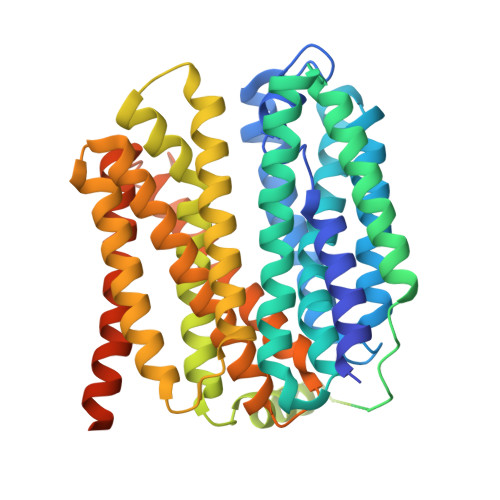Substrate transport and drug interaction of human thiamine transporters SLC19A2/A3.
Li, P., Zhu, Z., Wang, Y., Zhang, X., Yang, C., Zhu, Y., Zhou, Z., Chao, Y., Long, Y., Gao, Y., Liu, S., Zhang, L., Gao, P., Qu, Q.(2024) Nat Commun 15: 10924-10924
- PubMed: 39738067
- DOI: https://doi.org/10.1038/s41467-024-55359-8
- Primary Citation of Related Structures:
8Z7R, 8Z7S, 8Z7T, 8Z7U, 8Z7V, 8Z7W, 8Z7X, 8Z7Y, 8Z7Z, 8Z80 - PubMed Abstract:
Thiamine and pyridoxine are essential B vitamins that serve as enzymatic cofactors in energy metabolism, protein and nucleic acid biosynthesis, and neurotransmitter production. In humans, thiamine transporters SLC19A2 and SLC19A3 primarily regulate cellular uptake of both vitamins. Genetic mutations in these transporters, which cause thiamine and pyridoxine deficiency, have been implicated in severe neurometabolic diseases. Additionally, various prescribed medicines, including metformin and fedratinib, manipulate thiamine transporters, complicating the therapeutic effect. Despite their physiological and pharmacological significance, the molecular underpinnings of substrate and drug recognition remain unknown. Here we present ten cryo-EM structures of human thiamine transporters SLC19A3 and SLC19A2 in outward- and inward-facing conformations, complexed with thiamine, pyridoxine, metformin, fedratinib, and amprolium. These structural insights, combined with functional characterizations, illuminate the translocation mechanism of diverse chemical entities, and enhance our understanding of drug-nutrient interactions mediated by thiamine transporters.
Organizational Affiliation:
ENT Institute and Otorhinolaryngology Department of Eye & ENT Hospital, Institutes of Biomedical Sciences, Shanghai Key Laboratory of Medical Epigenetics, International Co-laboratory of Medical Epigenetics and Metabolism (Ministry of Science and Technology), Department of Systems Biology for Medicine, Fudan University, Shanghai, China.















